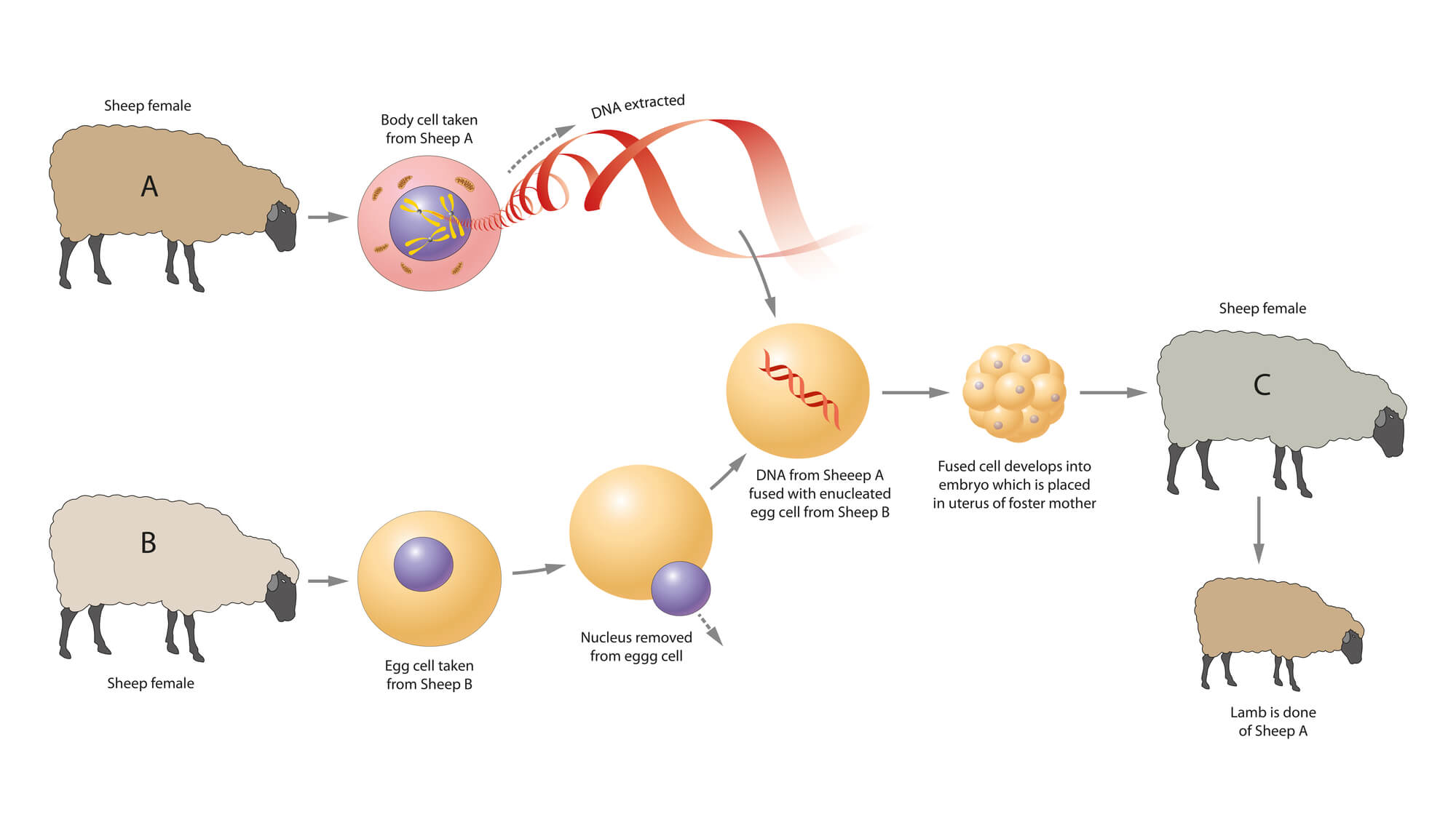Claims that a method developed in Japan to grow culture and tissues from the patient's own cells and that does not require cloning is preferable

Prof. Ian Wilmot, the "father" of the cloned sheep "Dolly", withdrew his support for "cloning for healing purposes" in an interview with the British Telegraph website. This, just a few days after American researchers announced a breakthrough in cloning apes.
Wilmot and his team made headlines in 1997 when they revealed the cloned sheep Dolly who was born in July 1996. However, now he has decided not to use the license to clone human embryos, even though it was granted to him two years ago, as part of a motivation to discover new treatments for diseases that cause damage to the motor nerves.
Prof. Wilmot from the University of Edinburgh believes that a competing method tried in Japan has the potential to develop human embryonic cells, and that growing the patient's tissues and cells can be used for a wide variety of treatments, from stroke treatment to heart attacks to Parkinson's, and that they will be less controversial compared to the method of Dolly based on the transfer of the cell nucleus.
In an interview with the British newspaper the Telegraph, Prof. Wilmot said that his announcement may mark the beginning of the end of cloning for healing purposes, in which tens of millions of dollars have been invested all over the world in the last decade. "I decided a few weeks ago not to continue transferring the cell nuclei," he said.
Prof. Wilmot emphasized that his motive is mainly practical, but also admitted in the interview that the Japanese approach is easier to accept from a social point of view. Wilmot refers to the research of Prof. Shinya Yamanaka from Kyoto University, who claimed to have found a way to create human embryonic stem cells without the need for human eggs, which are in constant shortage, and without the need to create and destroy cloned human embryos, something that is opposed by those who call themselves "pro-lifers".
Prof. Yamanaka has shown that mouse skin cells can be transformed into what appear to be versatile stem cells with the potential to overcome the effects of the disease.
A few years ago, one scientist already claimed that he had succeeded in overcoming the obstacle - Prof. Huang Woo-seok from South Korea, with whom Wilmot even began to cooperate, but about a year ago it was discovered that Prof. Huang's work was fraudulent. After that, Wilmot decided not to continue research in this direction but with his original work - cloning - until, as mentioned a few weeks ago, he was convinced of the correctness of the Japanese method to such an extent that he decided to stop the experiments.
More of the topic in Hayadan:
